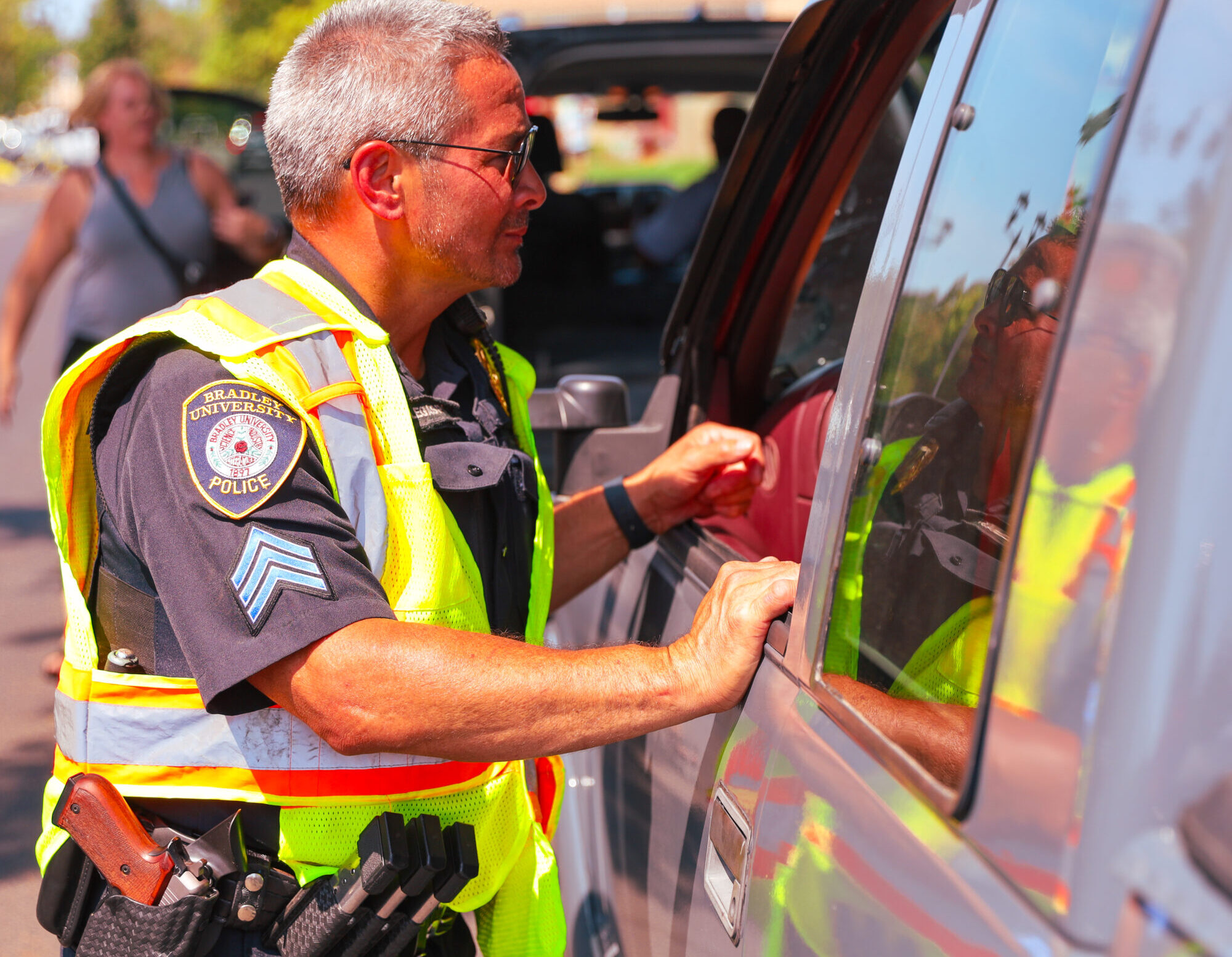Active Shooter
Follow these steps if someone begins shooting on or near campus.
Bomb Threats/Suspicious Packages
Know how to respond if you receive a bomb threat or encounter a suspicious package.
Earthquake
For Illinois and neighboring states, earthquakes with the epicenter in the New Madrid Fault Zone pose the greatest “single hazard” natural disaster with the potential for massive destruction and injury within the Central Mississippi Valley. Seismologists concur that there is the probability that a Richter Scale Magnitude 6.0 to 6.5 quake, could occur there at any time, or that a moderate-to-severe quake could occur sometime during the next 15 to 50 years.
Fire
A fire may include visible flames or strong odors of burning. The appropriate emergency action is for persons to evacuate the building quickly and safely and notify the Fire Department by dialing 911. Once a fire alarm has sounded, do not re-enter a building until the fire department or Bradley Police has given the all-clear message.
Pandemic Flu
Follow these CDC guidelines when new (novel) influenza A viruses emerge.
Seasonal and Swine Flu
Learn about Bradley’s prevention, vaccination and isolation strategies associated with seasonal flu and swine flu.
Tornado
The University has placed NOAA severe weather radios in many department offices as part of its ongoing life safety systems upgrade. The weather radios will alert departments about severe weather that may affect the city of Peoria and Bradley University and they will alert other departments within their building.
The weather radios will be used in conjunction with the existing City of Peoria siren warning system. The sirens effectively alert persons out of doors, however they do not provide good coverage indoors. The sirens are activated for tornado warnings only, not for watches. The City of Peoria will initiate a siren, or steady tone, for a period of 3 to 5 minutes. When you hear this siren, take cover immediately – danger is imminent.
A tornado watch means conditions are right for a tornado. During a tornado watch, staff should be alert to weather conditions.
A tornado warning means that a tornado has been sighted.
Violent Incident
Violent incidents including but not limited to acts of terrorism, assaults, and incidents of workplace violence can occur on the University campus with little or no warning. It should be noted that the following instructions are intended for incidents that are of an emergency nature (i.e., imminent or having just occurred).
Bradley has self-defense-training programs available for interested faculty, staff, and students. For information on women’s self defense training, contact Bradley Police at 677-2000. For information on martial arts training/classes, contact the Campus Recreation Department at 677-2677.
Additional Links
Connect with Us


